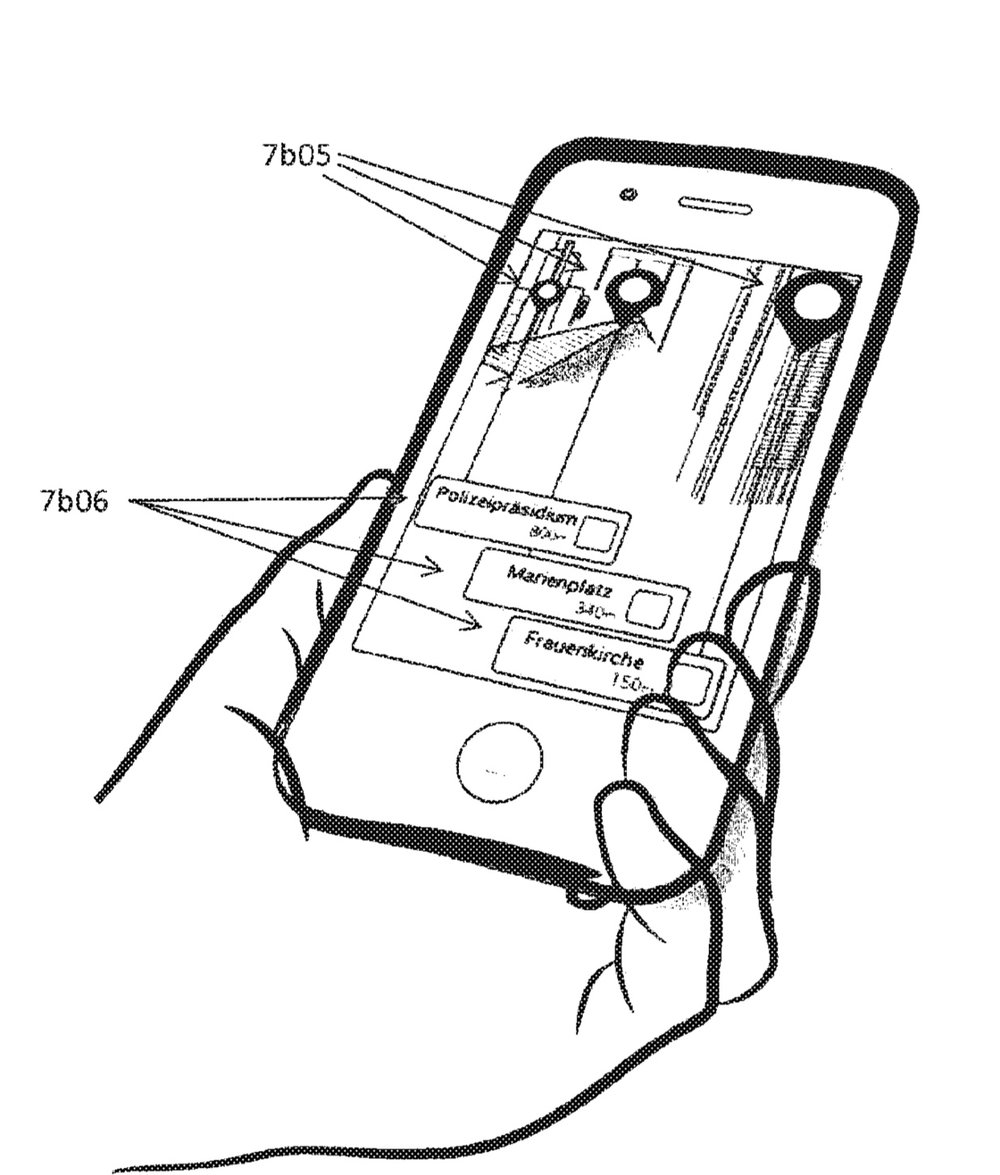Augmented reality (AR) is coming to the iPhone. And a new Apple patent (number 20170213393) dubbed “method for representing points of interest in a view of a real environment on a mobile device” shows some of the things we can expect in the near future.
In the patent filing, Apple notes that AR systems can enhance information of a real environment by providing a visualization of overlaying computer-generated virtual information with a view of the real environment or a part of the real environment. The virtual information can be any type of visually perceivable data such as objects, texts, drawings, videos, or their combination.

The view of the real environment or a part of the real environment could be perceived as visual impressions by a user’s eyes and/or be acquired as one or more images captured by a camera held by a user or attached on a device held by a user.
A point of interest (commonly referred to as “POI”) is known in the art to represent a location or a real object (e.g., a building, a landmark, a moving car) in a real environment. A POI often has associated digital content that is related to the location or the real object. The digital content could be, for instance, audio information, video information, pictures, textual information, 3D representations or their combinations.
The invention involves display of points of interest in a view of a real environment displayed on a screen of a mobile device (an iPhone) based on user interaction. This involves the steps of:
- Capturing an image of the real environment or a part of the real environment using a camera;
- Determining at least one point of interest related to the real environment;
- Determining an image position of the at least one point of interest in the image;
- Displaying at least part of the image on at least part of the screen.
- Overlaying a computer-generated indicator with the at least part of the image on the screen at a screen position according to the image position of the at least one point of interest;
- Displaying a computer-generated virtual object related to the at least one point of interest on the screen at a screen position determined according to the screen position of the computer-generated indicator and which is adjacent to a bottom edge of the screen;
- Displaying a visually perceivable relation indication indicative of a relation between the computer-generated virtual object and the computer-generated indicator.
With all these steps, the iPhone may perform an action related to the at least one point of interest if at least part of the computer-generated virtual object displayed on the screen is touched.
At this summer’s Worldwide Developer Conference, Apple introduced ARKit. It allows developers to tap into the latest computer vision technologies to build detailed virtual content on top of real-world scenes for interactive gaming, immersive shopping experiences, industrial design and more.
Of course, Apple files for — and is granted — lots of patents by the U.S. Patent & Trademark Office. Many are for inventions that never see the light of day. However, you never can tell which ones will materialize in a real product.
